24 Best Historical Sites to Visit in Japan
Looking for the Best Historical Sites to Visit in Japan? Prepare to be enchanted by a country steeped in rich history and ancient traditions. Japan boasts a multitude of awe-inspiring historical sites that offer a glimpse into its fascinating past. Take a look at our curated selection of the top 24 historical landmarks to explore in Japan.
Sensoji Temple, Tokyo
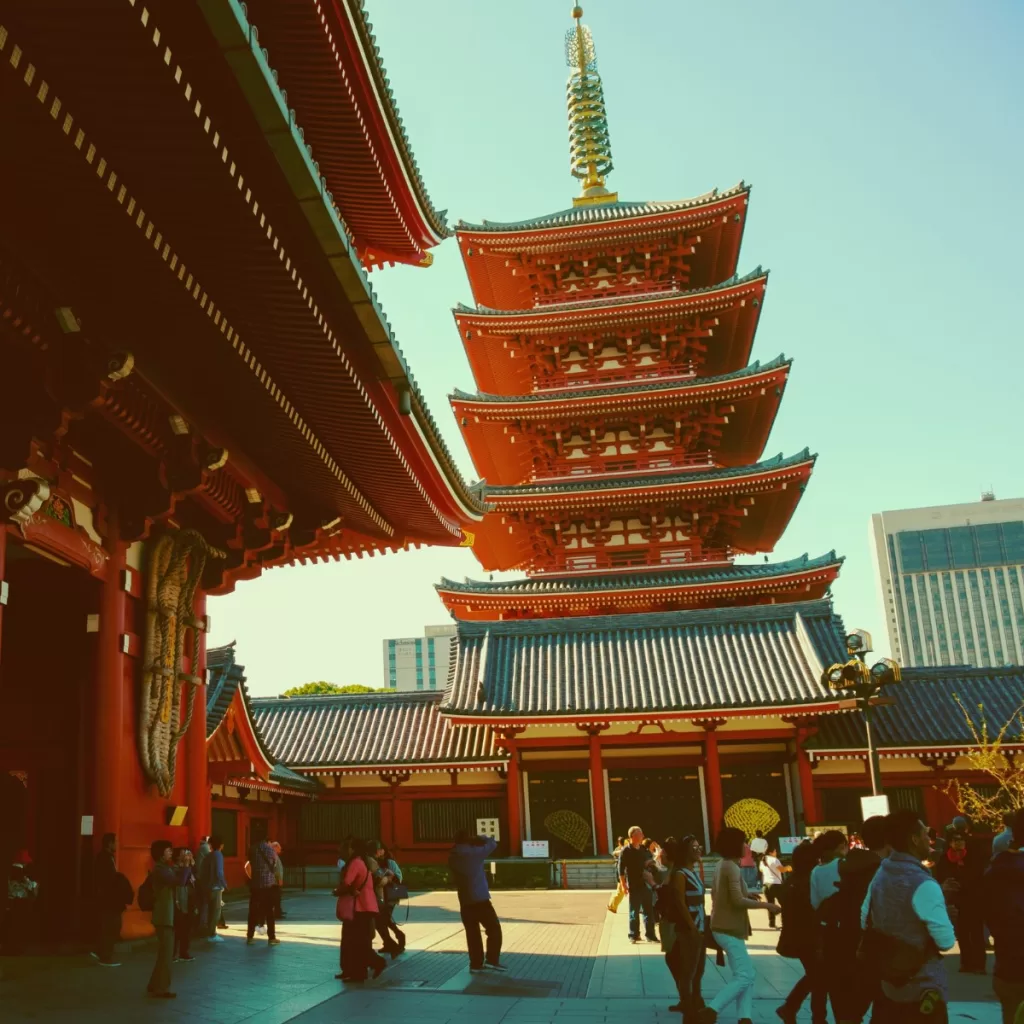
One of the best sites in Japan is the Sensoji Temple. Sensoji Temple is Tokyo’s oldest and most significant temple. Located in Asakusa, this popular Buddhist temple honors Kannon Bosatsu, the goddess of mercy. Sensoji Temple was founded in 628 AD and is approached via the famous Kaminarimon Gate with its enormous red paper lantern.
The temple complex houses several shrines and gardens and the five-story pagoda. It is the perfect place to experience traditional Japanese architecture and culture. Don’t miss the many street food stalls lining the approach to the temple.
Sensoji Temple is considered one of Tokyo’s top historical and cultural sites. Over 30 million people visit the temple annually, making it one of the world’s most visited spiritual sites. The temple grounds buzz with energy while exuding an air of peace and tranquility in the heart of Tokyo.
Meiji Jingu Shrine, Tokyo
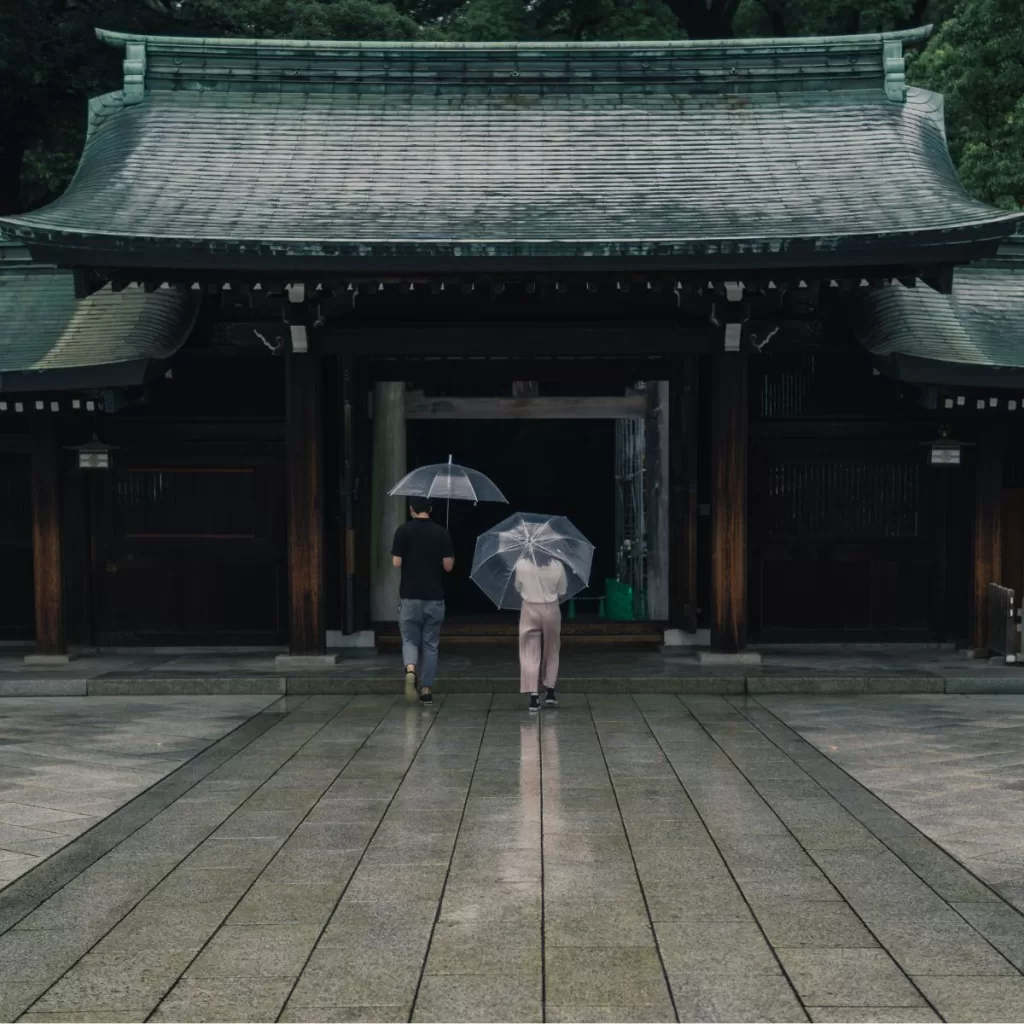
Meiji Jingu, one of the best historical sites in Tokyo, is a Shinto shrine in dedicated to Emperor Meiji and Empress Shoken. Basically, it holds great importance in Japanese history as it was built to honor Emperor Meiji and Empress Shoken, who played crucial roles in modernizing Japan. Constructed in 1920, it honors the deified spirits of the Emperor and Empress credited with Japan’s transition from feudal isolation to modernization. The shrine’s buildings are made of cypress from the Kiso region using traditional Japanese joinery techniques.
This shrine in Japan lies in a 170-acre evergreen forest and provides an oasis of spiritual calm in the bustling city. The shrine’s Inner Garden, only open a few days a year, features iris flowers planted by Empress Shoken herself. Meiji Jingu is one of Tokyo’s most significant shrines and a place to experience Shinto beliefs and architecture.
This serene shrine offers visitors a peaceful retreat from the bustling city, allowing them to admire the beautiful architecture, stroll through the lush gardens, and offer prayers at the main hall. It serves as a symbol of spirituality and reverence, inviting both locals and tourists to learn about and appreciate the rich cultural heritage of Japan. It’s definitely one of the best historical sites in Japan.
Imperial Palace, Tokyo
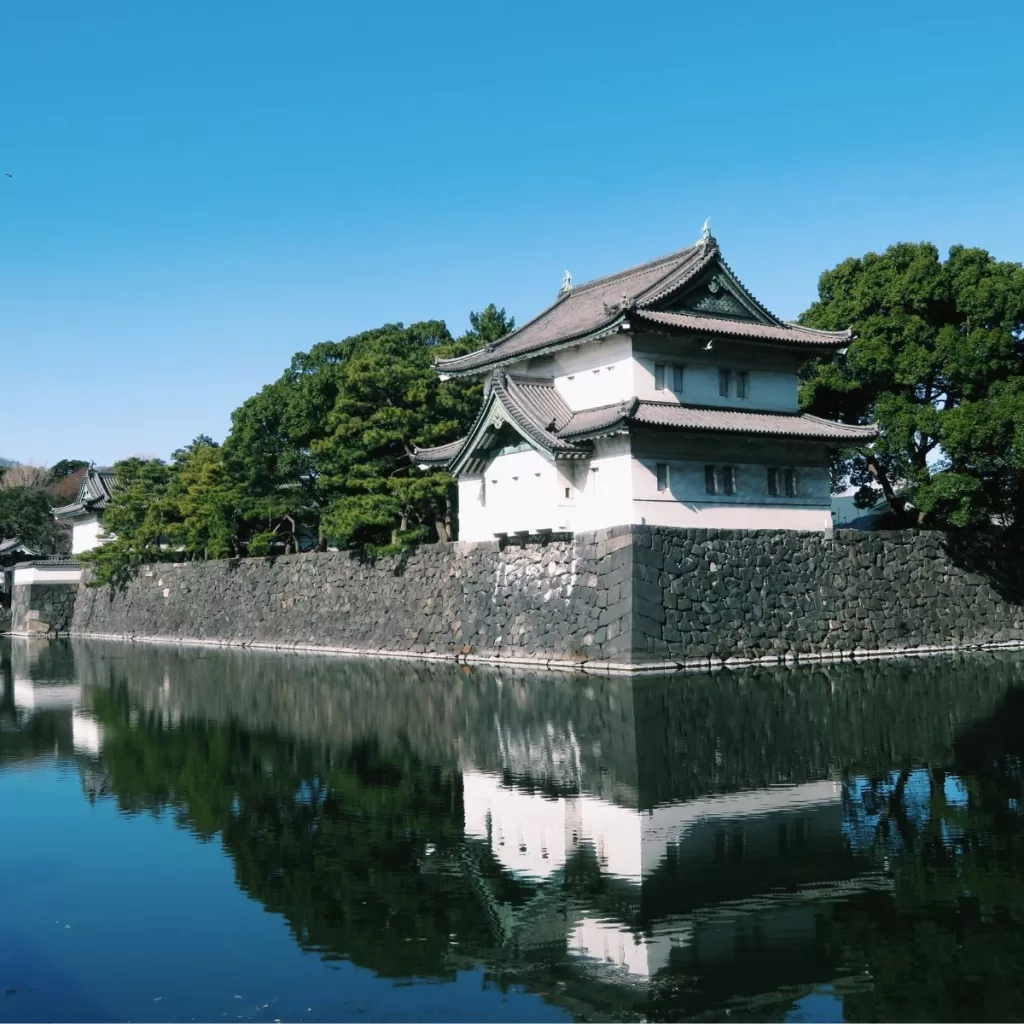
The Imperial Palace in Tokyo is one of the famous landmarks that represents the grandeur and history of ancient Japan. As the primary residence of the Emperor of Japan, it holds immense cultural significance and serves as a symbol of the country’s imperial heritage.
This ancient site sits on the former site of Edo Castle, the seat of power for the Tokugawa shoguns who ruled Japan from 1603 to 1867. After the Meiji Restoration in 1868, the imperial family moved from Kyoto to Tokyo and made Edo Castle the new imperial palace. Though most of the castle was destroyed by fire, the moats, walls, and several guardhouses remain intact.
The Tokyo Imperial Palace East Gardens on the palace grounds are open to the public and provide visitors with a glimpse of the palace’s history and architecture. Though the palace buildings themselves are not open to tourists, exploring the gardens is one of the top things to do in Tokyo for history lovers.
Hiroshima Peace Memorial Park
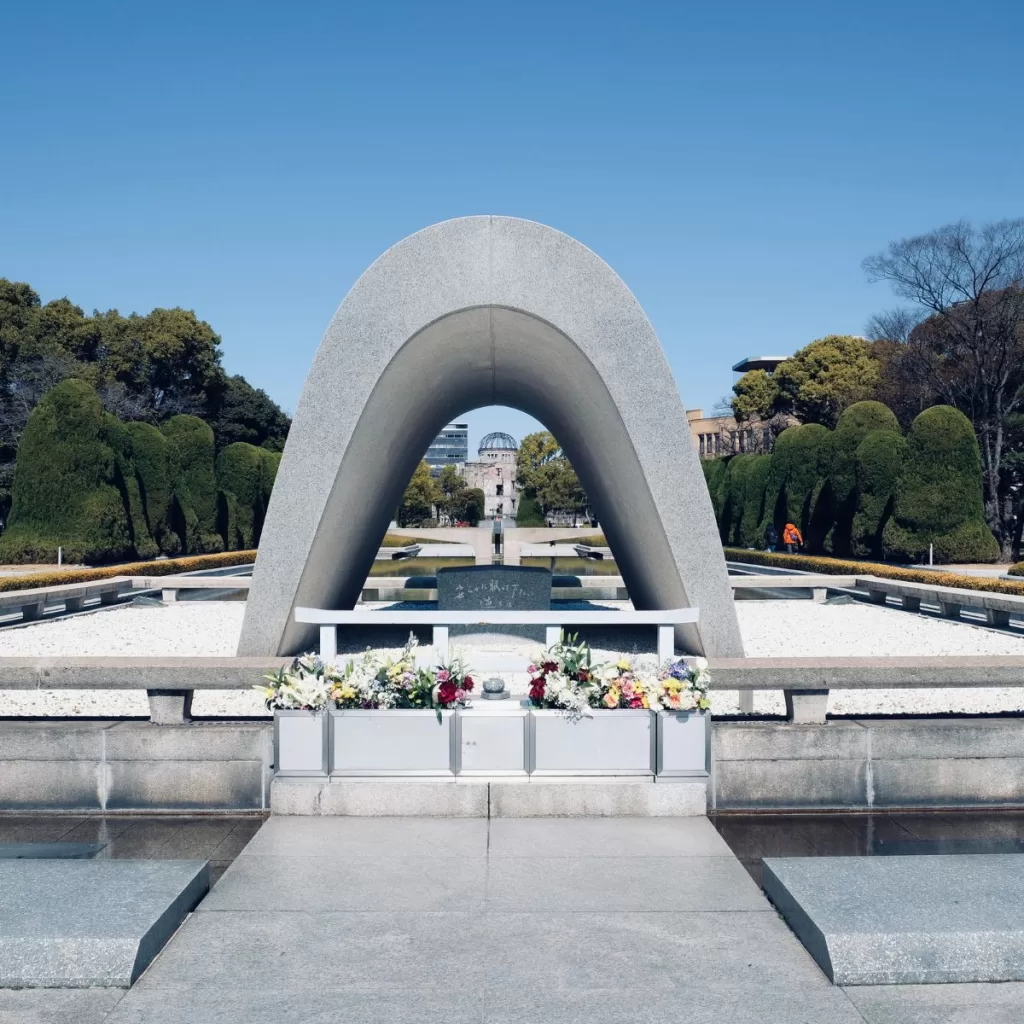
Hiroshima Peace Memorial Park, one of the oldest historical sites, is a place of profound importance throughout Japan. Located in Hiroshima, this park serves as a poignant reminder of the devastating impact of the atomic bomb during World War II.
Hiroshima Peace Memorial Park commemorates the victims of the world’s first atomic bombing on August 6, 1945. The park contains memorials, monuments, and museums about that fateful event, along with an enduring message of peace. The ruined Genbaku Dome, also called the A-Bomb Dome, has been preserved in the same state as after the bombing, and is also a UNESCO World Heritage Site. Other landmarks are the Children’s Peace Monument and the Peace Flame.
Visiting Hiroshima Peace Memorial Park provides critical insight into the devastating effects of nuclear warfare. Seeing the Atomic Bomb Dome and monuments firsthand is a sobering experience but vital for understanding Japan’s historic role in promoting world peace.
It is a solemn and peaceful place where visitors can pay their respects to the victims, learn about the tragic events that unfolded, and reflect upon the importance of peace and nuclear disarmament. It is a must-see destination for anyone interested in understanding the history and promoting peace in our world.
Itsukushima Shrine, Hiroshima
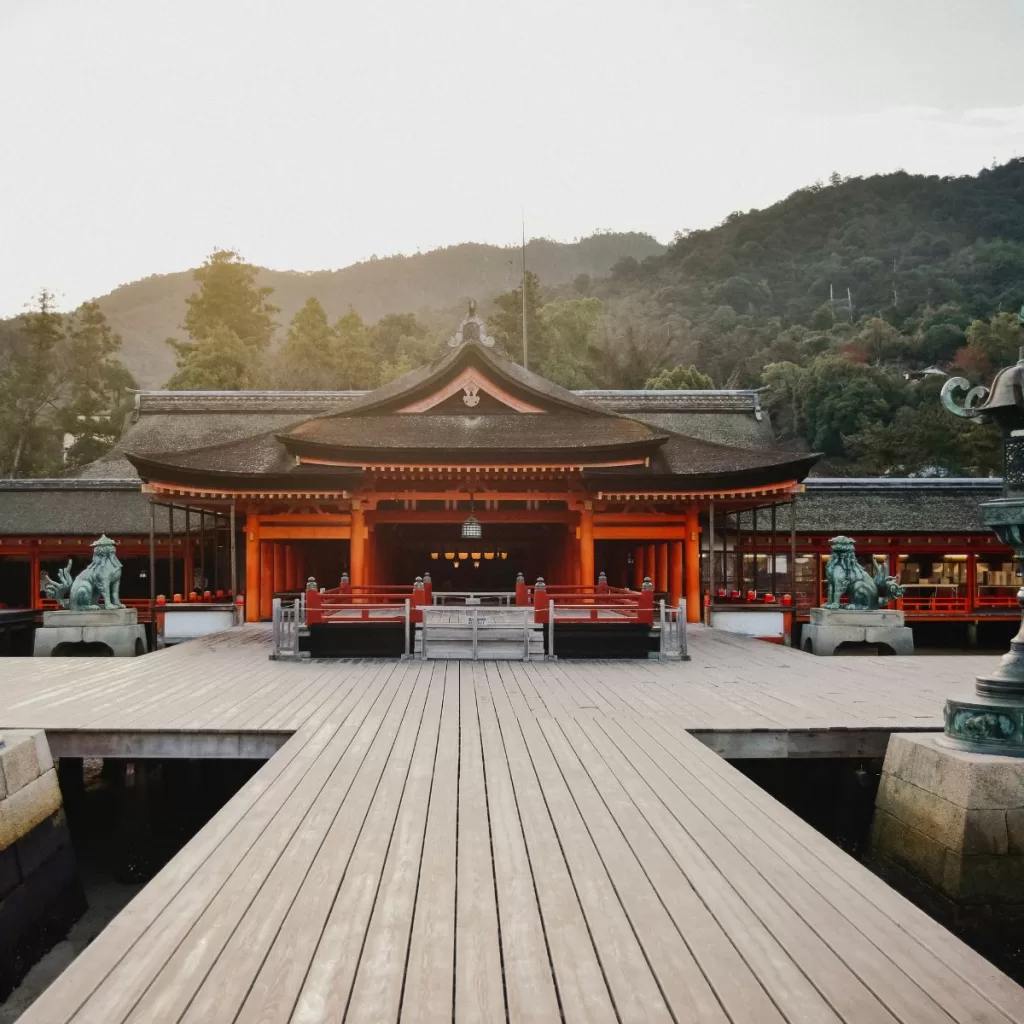
Itsukushima Shrine in Hiroshima is one of the best places to experience Japan’s rich history and culture.
Built over water, the shrine appears to float during high tide and is connected to the island by a dramatic red O-torii gate emerging from the sea. Itsukushima is dedicated to three female Shinto deities and has ancient origins from the 6th century.
In addition to the shrine’s unique architecture, Miyajima is home to wild deer that roam freely through town. Visiting Itsukushima Shrine is a must-do day trip from Hiroshima to see this iconic UNESCO World Heritage Site and learn about Shinto history. Truly, Itsukushima Shrine on Miyajima island is one of Japan’s most instantly recognizable sights.
Kinkakuji Temple, Kyoto
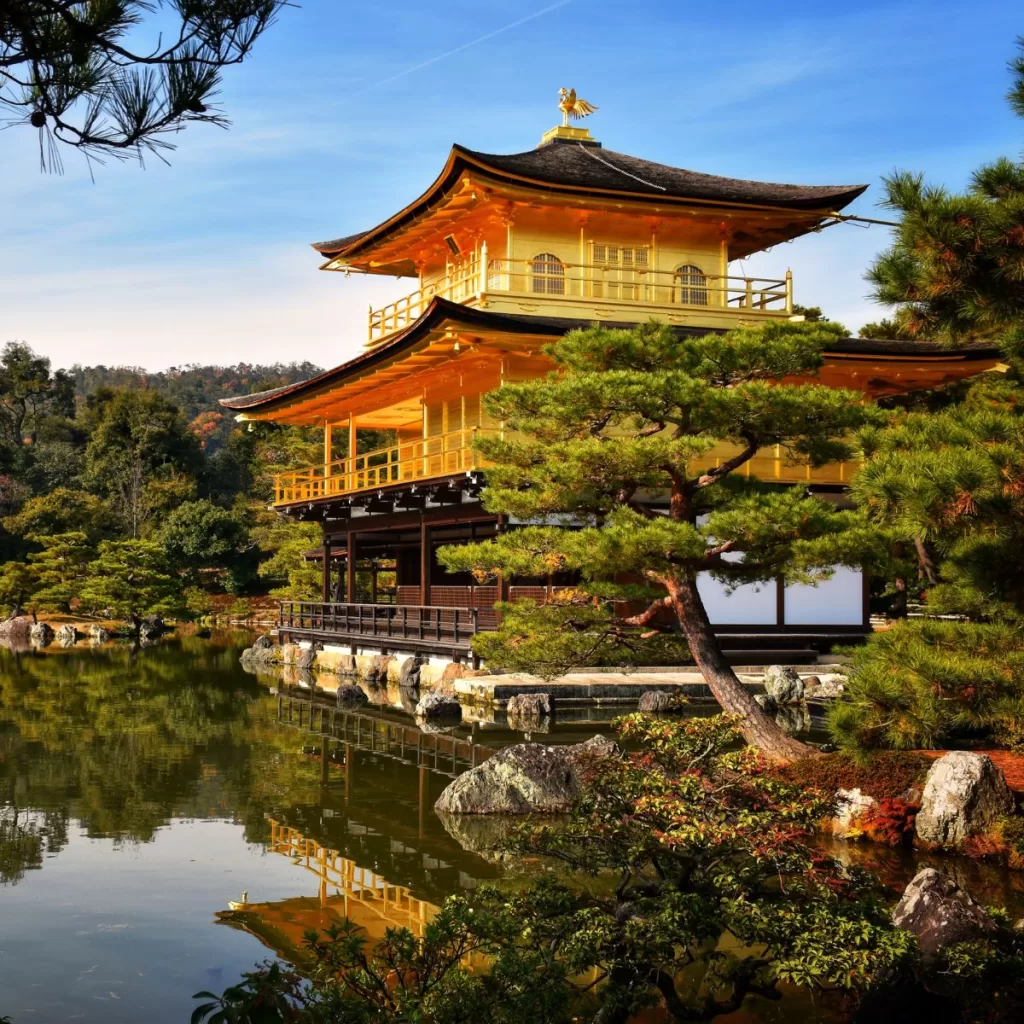
If you want to explore the wonders of Japanese culture, Kinkakuji Temple in Kyoto is a must-visit place. Known as the Golden Pavilion, this iconic temple showcases stunning architecture and breathtaking scenery.
Kinkakuji, is a Zen temple with its top two floors completely covered in gold leaf. When you visit the site, you’ll be captivated by the golden exterior and the tranquil reflection in the surrounding pond. Set within a strolling garden, the golden temple reflects beautifully on the mirror-like Kyoko-chi pond. Though rebuilt multiple times over its history, including most recently in 1955 after being burned down by a monk, the reliquary hall remains Kyoto’s most iconic landmark.
The contrast between the shimmering golden temple set against a lush green landscape creates an unforgettable sight. Don’t miss visiting this architectural wonder, one of Kyoto’s premier historical attractions.
Fushimi Inari Shrine, Kyoto
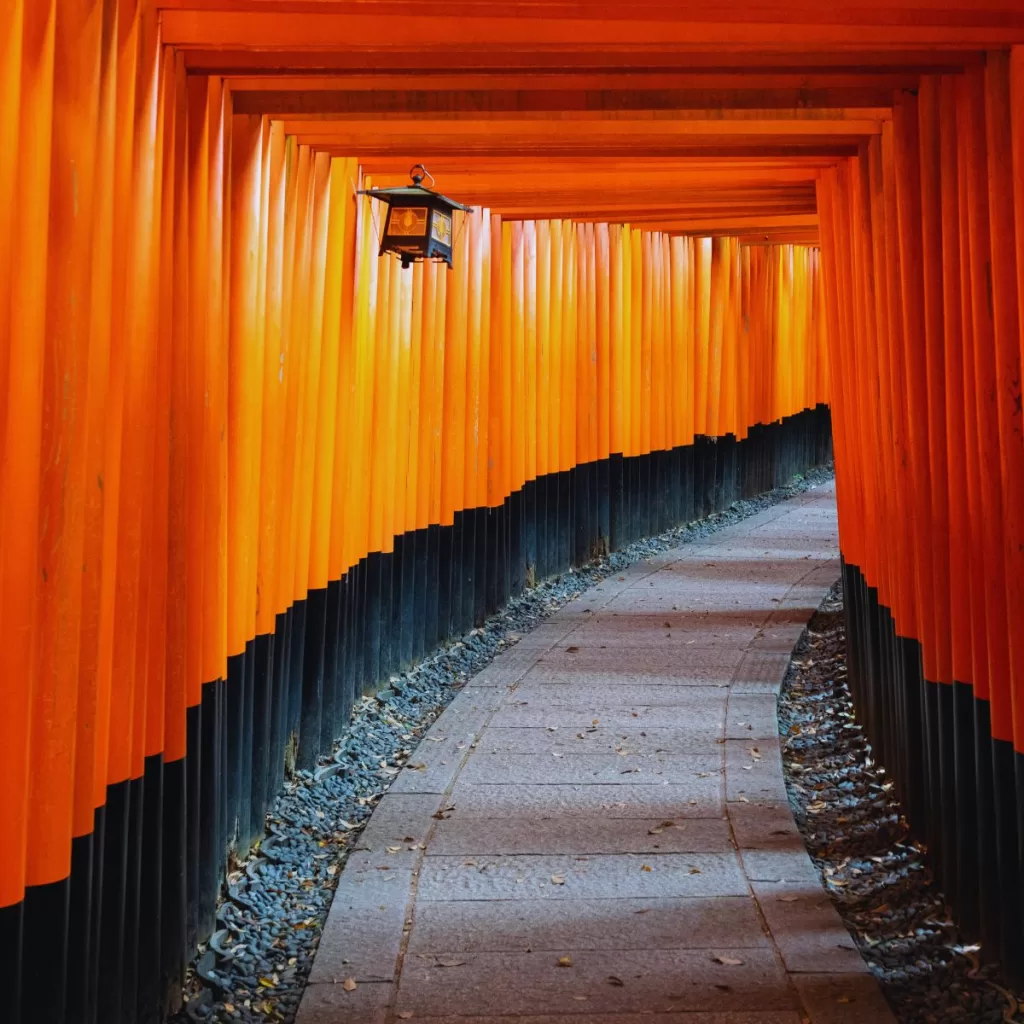
Fushimi Inari Shrine in Kyoto is one of the best historic sites to explore when visiting Japan.
Fushimi Inari Shrine, dedicated to the god of rice and sake, is most famous for its thousands of vibrant orange torii gates that wind through the hills behind the shrine. Visitors can hike along paved mountain trails under the seemingly endless rows of gates made as offerings. Foxes, considered messengers for the shrine’s god, are everywhere, from stone statues to motifs on the torii gates.
Fushimi Inari Shrine makes for an atmospheric, memorable visit to see outstanding Japanese architecture while learning about Shinto beliefs. The peaceful forested areas around the torii gate trails contrast beautifully with the crowds at the bottom.
Nijo Castle, Kyoto
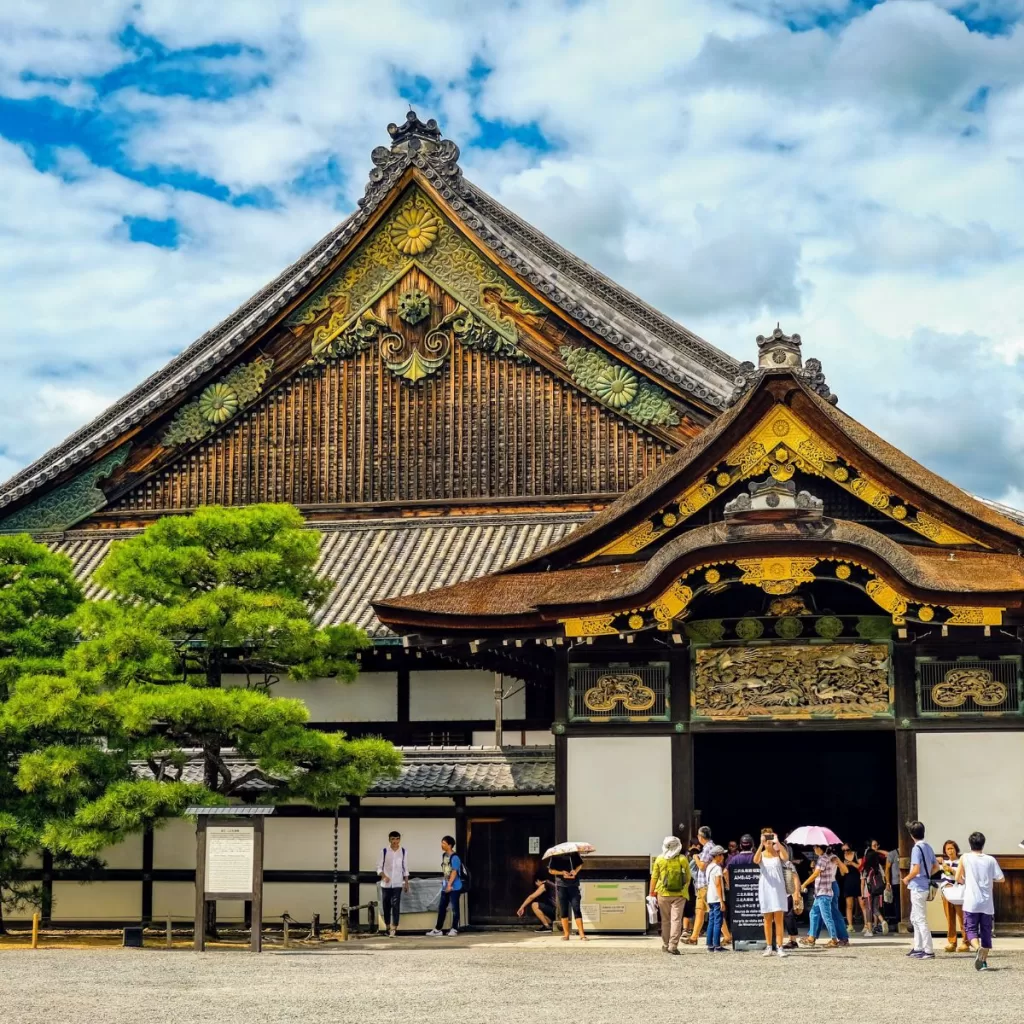
Built in 1603, Nijo Castle was the Kyoto residence of the first Tokugawa shogun, though later shoguns also lived there. The castle is renowned for its ornate interiors and Nightingale floors, designed to make nighttime assassins easier to detect.
Lavish wall paintings and carved woodwork panels screen paintings showcase the luxury in which the shoguns lived. Today, the castle buildings are preserved as outstanding examples of Momoyama architecture.
Strolling through Nijo Castle’s buildings and gardens provides insight into the Edo period’s political power and artistry. Don’t miss seeing the impressive wall paintings and Nightingale floors on a tour of the castle, a historical highlight of visiting Kyoto.
Kiyomizudera Temple, Kyoto
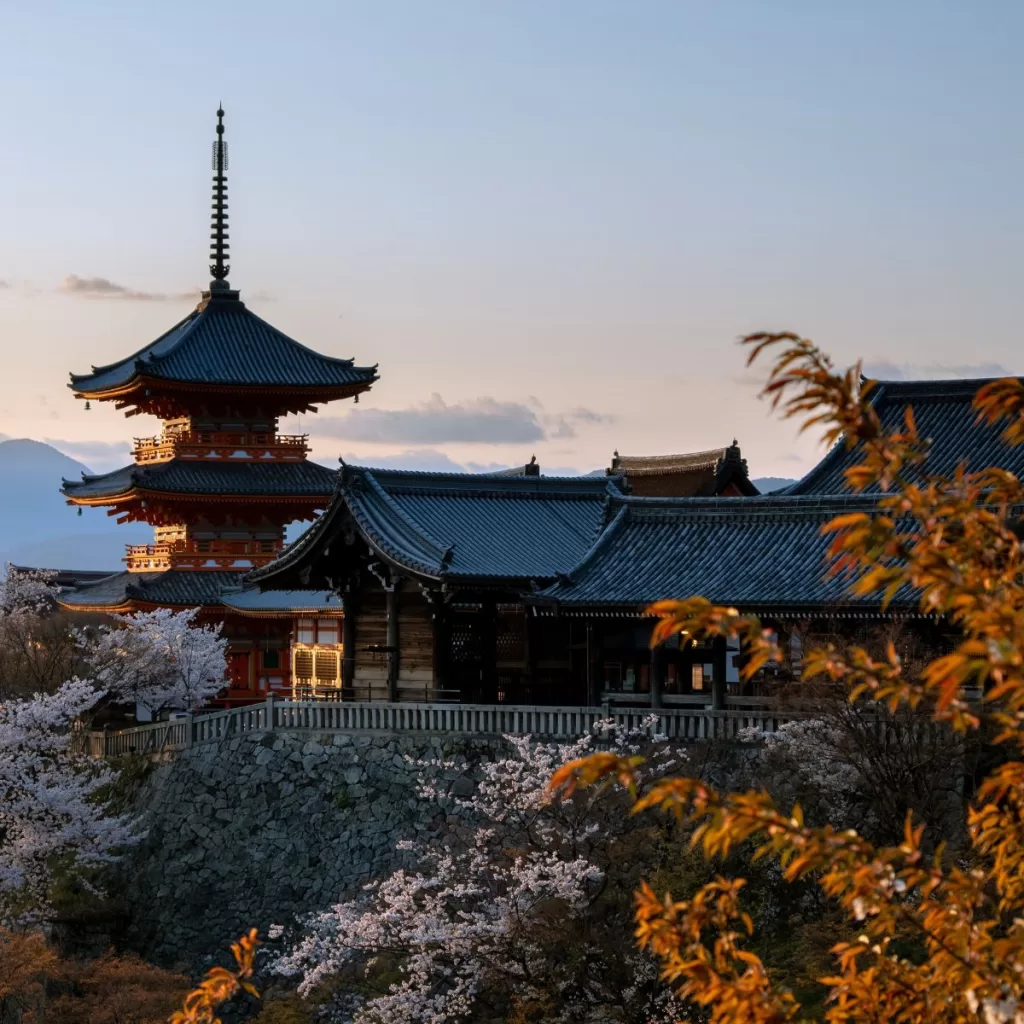
Kiyomizudera Temple in Kyoto is a famous destination known for its impressive shrine buildings. Considered to be one of the oldest and most iconic temples in Japan, it holds deep historical and cultural significance.
Kiyomizudera Temple, built in 780 AD, takes its name from the pure waters of the Otowa Waterfall, where visitors drink for health and longevity. The temple, a UNESCO World Heritage Site, has a large wooden terrace jutting out from the Main Hall, offering panoramic views over Kyoto. In spring, the temple’s cherry blossom trees surrounding the hondo are breathtaking.
Visit Kiyomizudera to stand in awe under the grand, red entrance gate, explore the many shrines and sub-temples, and take in the sweeping views that draw thousands year after year. Kiyomizudera captures the heart of Buddhist architecture and culture in Japan.
Osaka Castle
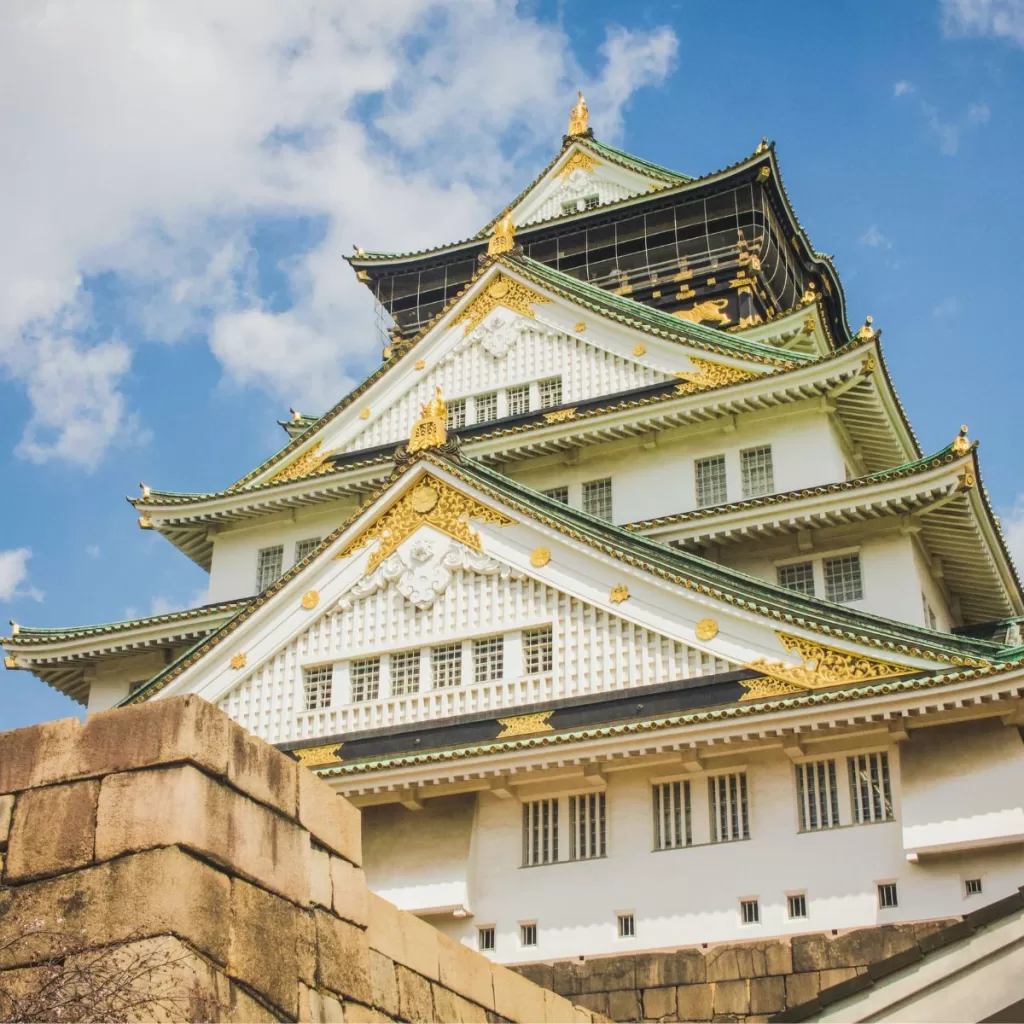
Towering over Osaka, this imposing 16th-century castle and museum chronicles the tumultuous history of Osaka. The castle was originally built by legendary shogun Toyotomi Hideyoshi though destroyed and rebuilt numerous times over the centuries. The main five-story castle tower houses artifacts from the castle’s past and observation decks. The sprawling castle grounds contain plum, peach, and cherry blossom trees.
Osaka Castle represents Japanese castle architecture at its most impressive. Visitors can learn about Osaka’s culture while enjoying the springtime beauty of the castle’s flowers against its grand white walls and structures. This famous local landmark provides insight into Japan’s past rulers and power struggles.
Himeji Castle
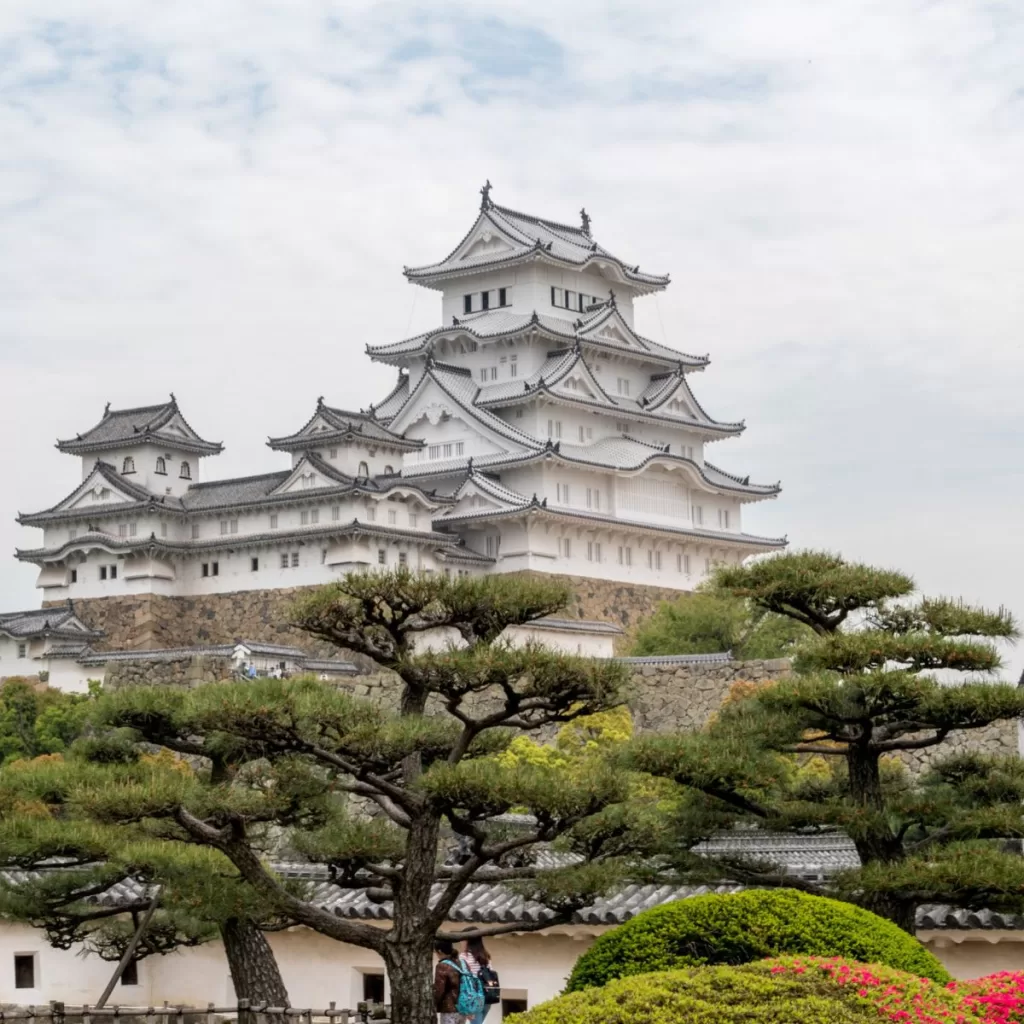
Nicknamed the “White Heron Castle” for its brilliant white walls and graceful design, Himeji Castle dates to the 14th century and is the largest surviving feudal castle in Japan.
Unlike other castles, Himeji Castle is almost entirely in its original condition, having survived wars, earthquakes and restorations over the centuries. Visitors can tour the castle’s interior with its advanced defensive systems and architecture.
Himeji Castle’s pristine white aesthetics set against surrounding gardens and its hilltop position create a striking sight. Exploring centuries-old castle rooms and passageways transports visitors back in time to medieval Japan when samurai warriors walked these halls.
Todaiji Temple, Nara
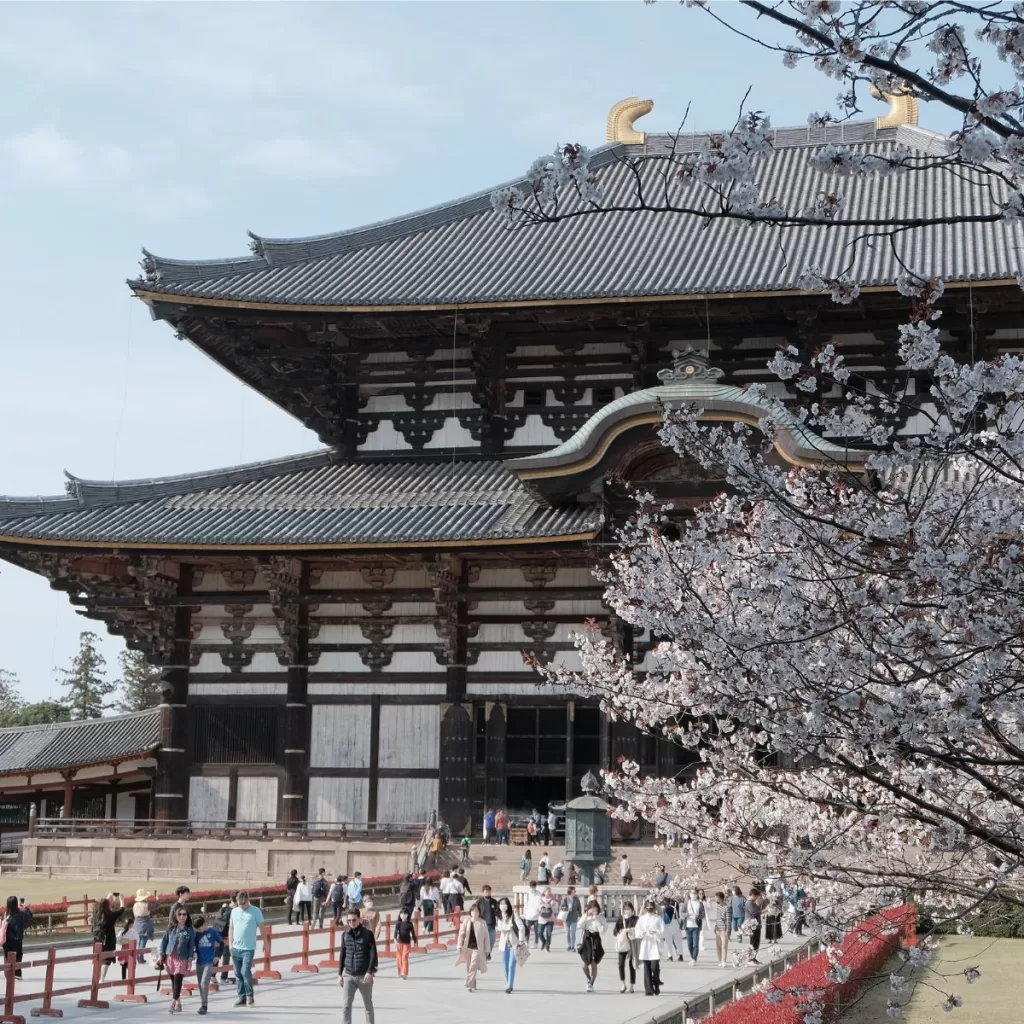
Todaiji Temple in Nara is a remarkable site known for its historical buildings. As one of Japan’s most famous and significant temples, it holds a special place in Japanese history and culture.
Founded in 752 AD, Todaiji Temple in Nara is one of Japan’s most historically significant and influential Buddhist temples. The enormous Daibutsu (Great Buddha) bronze statue within Todaiji’s hall is one of the largest Buddha statues in the world at 15 meters tall. The Daibutsu-den hall housing the Great Buddha statute remains as the world’s largest wooden building.
Visiting the impressive Todaiji Temple offers insight into ancient Japanese Buddhist architecture, art, and culture. Seeing the serene Daibutsu Buddha statue amidst the grand wooden temple buildings creates an unforgettable and reflective experience.
Kasuga Taisha, Nara
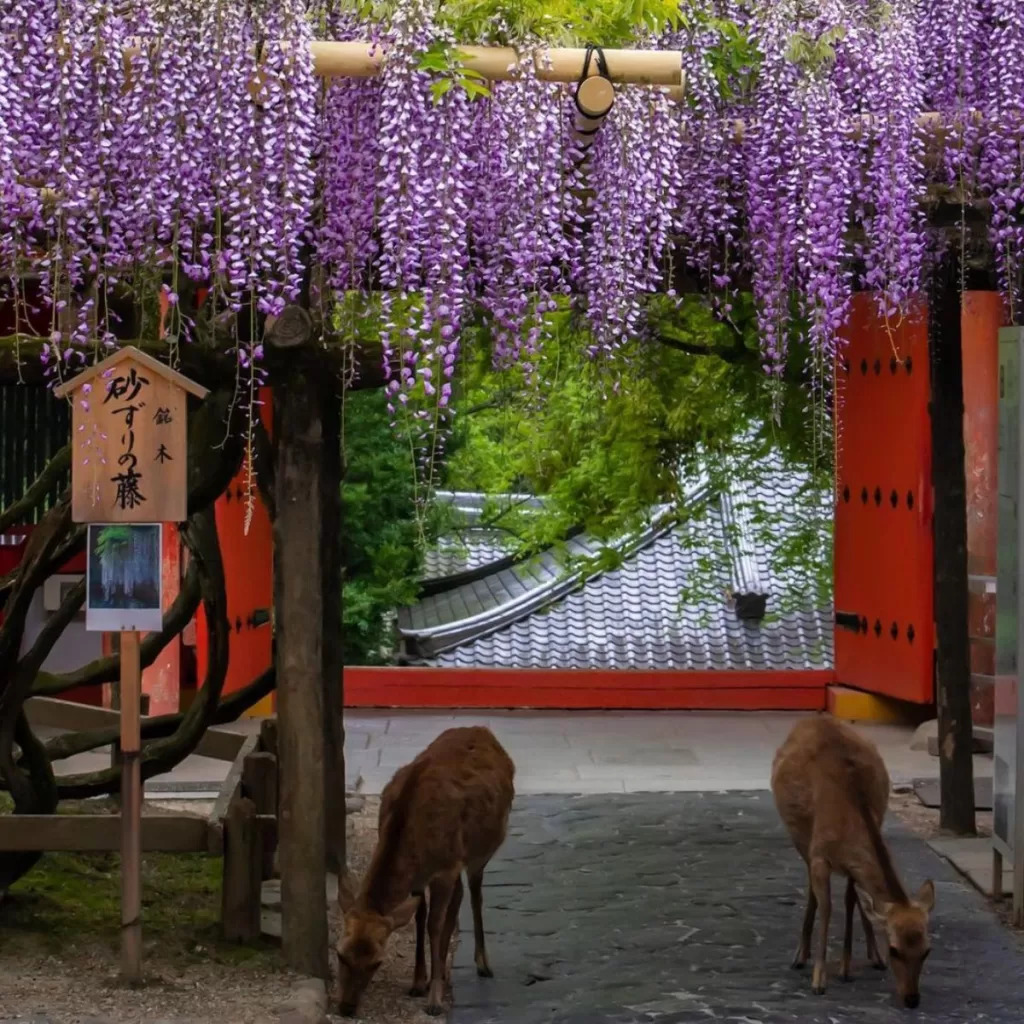
Kasuga Taisha in Nara is another wonderful place to visit. This Shinto shrine, nestled amidst a tranquil forest, exudes a serene and mystical atmosphere.
This iconic Shinto shrine set in Nara Park was established in 768 AD and protects the city of Nara. Kasuga Taisha is renowned for its lanterns that line the shrine pathways, with over 3,000 lanterns donated by worshippers. During Setsubun mantoro in early February, thousands of lanterns are all lit, bathing the shrine in a mystical glow. The shrine’s vermilion-lacquered buildings and ancient forests create a serene backdrop.
Tourists can explore the stunning architecture, learn about the shrine’s history and significance, and enjoy a peaceful stroll through the surrounding gardens. Whether you are seeking a spiritual experience or simply want to immerse yourself in the beauty of nature, Kasuga Taisha is a must-visit destination in Nara.
Ginkakuji (Silver Pavilion), Kyoto
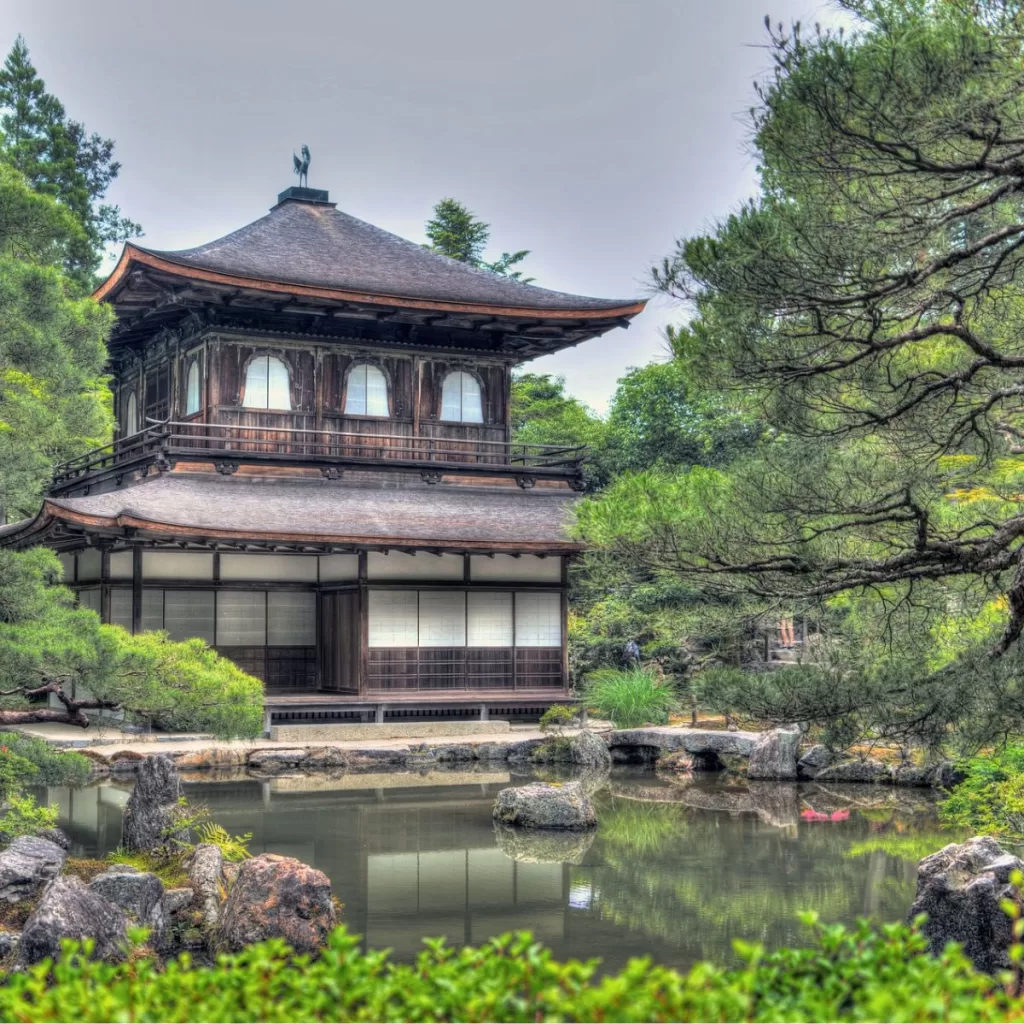
Ginkakuji, also known as the Silver Pavilion, is a sight to see in Japan. Located in Kyoto, this iconic temple is renowned for its elegant architecture and exquisite gardens.
Ginkakuji is a Zen temple originally modeled after Kinkakuji’s golden temple. Though the silver exterior was never completed, the temple has dry sandscapes designed for meditation and moss gardens to represent the Buddhist pure land. Walking through the temple’s grounds, visitors can reflect on the impermanence of life and natural beauty. Ginkakuji exemplifies the restrained aesthetics of traditional Japanese gardens.
Visitors can stroll through the meticulously landscaped grounds, marvel at the traditional Japanese design, and soak in the peaceful ambiance. Ginkakuji is a must-visit destination for those wanting to witness the beauty and tranquility that Kyoto has to offer.
Kenrokuen Garden, Kanazawa
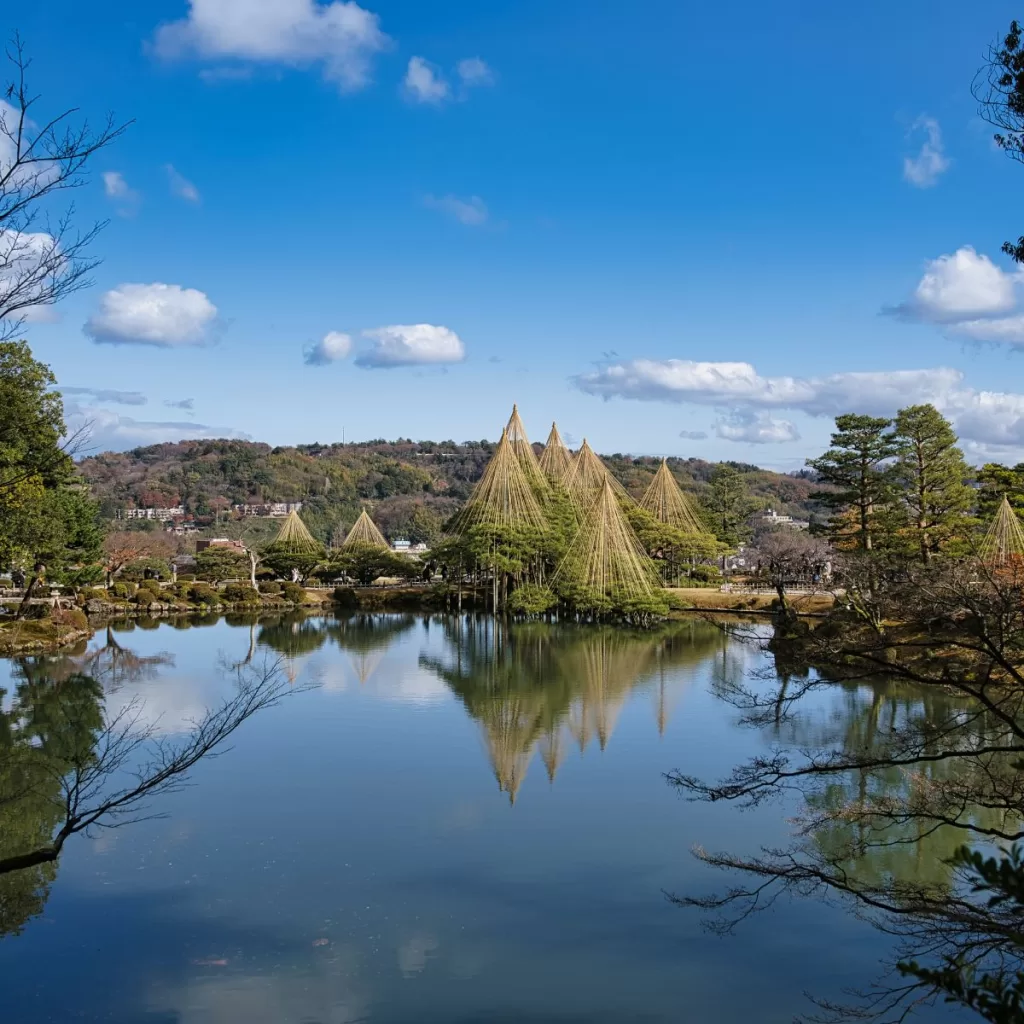
Kenrokuen Garden in Kanazawa is a place of natural beauty. It is considered one of the most beautiful gardens in Japan.
Considered one of Japan’s Three Great Gardens, Kenrokuen incorporates all key aspects of a Japanese landscape garden. Built in 1676 over nearly two centuries, the 25-acre garden contains ponds, streams, stone lanterns, plum, cherry, and maple trees, and views of the castle. Visitors can stroll along paths past fountains, temples, and historic tea houses within the garden’s beauty any time of year.
Kenrokuen Garden offers a peaceful and picturesque escape from the bustling city, allowing visitors to immerse themselves in the tranquility of nature. It is a must-visit destination for anyone seeking a serene and visually stunning experience in Kanazawa.
Shimogamo Shrine, Kyoto

Shimogamo Shrine in Kyoto is one of the sacred sites that offer a meaningful experience during your time in Japan. Located in a serene forested area, this shrine holds deep spiritual significance in Japanese culture.
This ancient Shinto shrine to the god of storms dates back to the 6th century. Set in the forested banks of the Kamo River, the shrine exudes tranquility. Visitors pass under towering torii gates along sand-covered paths circled by the forest. During Aoi Matsuri each May, a procession in Heian period costumes visits the shrine. The Tadasu no Mori wood behind the shrine is sacred and believed to be inhabited by spirits.
Shimogamo Shrine is not only a place of worship but also a beautiful retreat where you can connect with the spiritual heritage of Japan.
Izumo Taisha, Shimane
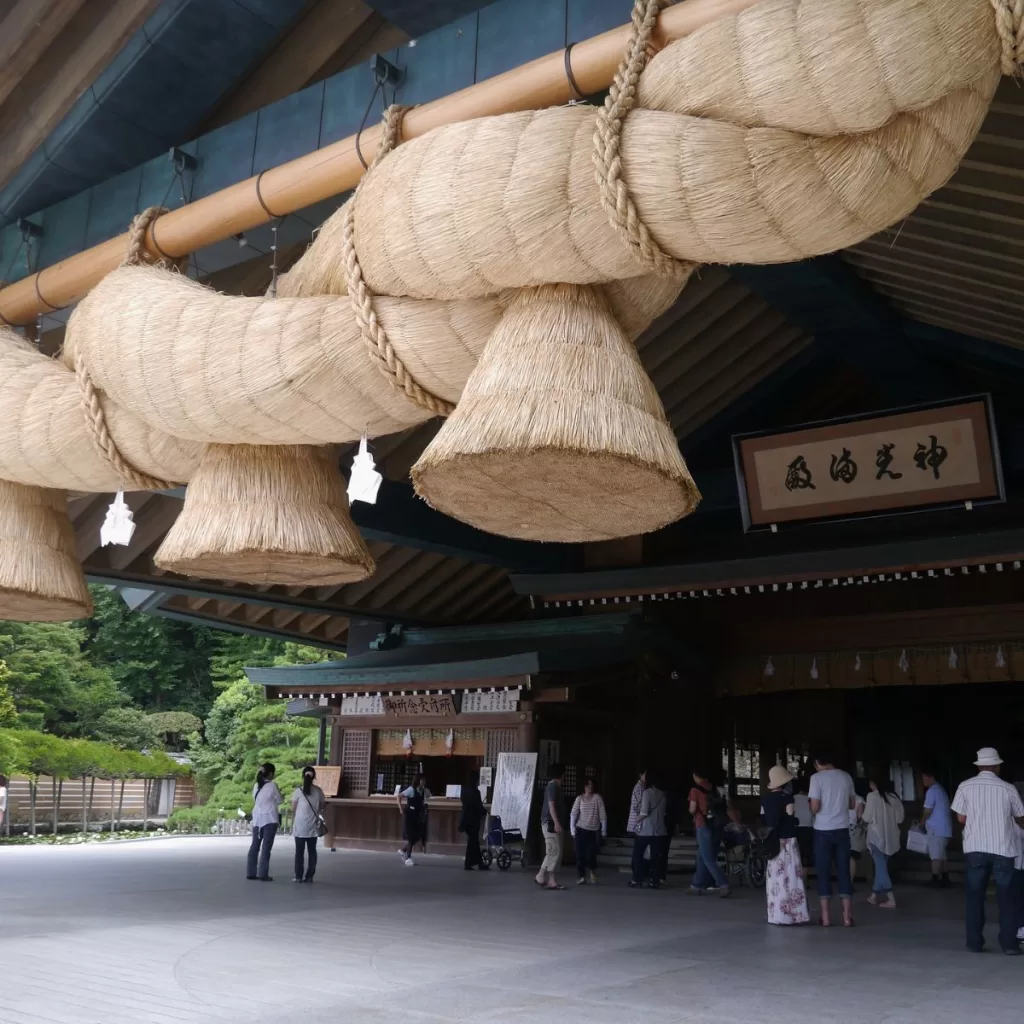
Izumo Taisha in Shimane is a significant site in Japanese cultural history. Known as one of the oldest and most important Shinto shrines in Japan, it holds a special place in the hearts of Japanese people.
Izumo Taisha in Shimane Prefecture is one of Japan’s oldest and most important Shinto shrines. The shrine is as old as recorded history in Japan and honors the Shinto deity Okuninushi, associated with marriage and good matches. The huge shrine complex contains multiple symbolic structures, including the country’s tallest torii gate. The main buildings have an unusual architectural style rarely seen elsewhere in Japan.
Matsumoto Castle, Nagano
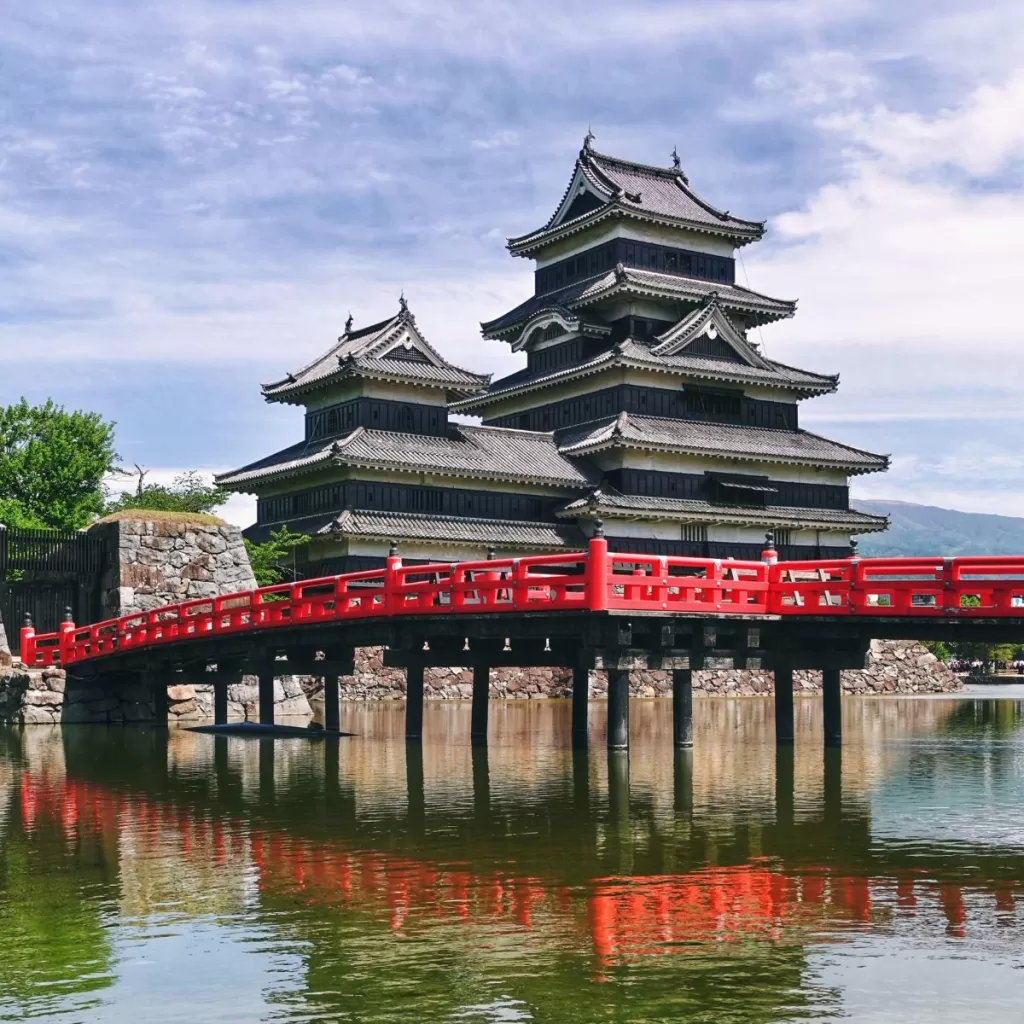
Matsumoto Castle in Nagano is a magnificent and historic landmark. Known as one of Japan’s original castles, it stands proudly with its striking black exterior and elegant architecture.
This 16th-century castle, also known as Crow Castle due to its black exterior, is one of Japan’s most beautiful original castles. Matsumoto Castle has a five-story main keep, connected turrets, and a moon-viewing pavilion set against a scenic mountain backdrop. Visitors can climb up inside the castle to see the wooden interiors and defenses. The castle grounds are a popular spot for cherry blossom and autumn leaf viewing.
Matsumoto Castle provides a fascinating glimpse into Japan’s feudal past and is a must-visit for history enthusiasts and those seeking to appreciate the country’s architectural marvels.
Adachi Museum of Art, Shimane
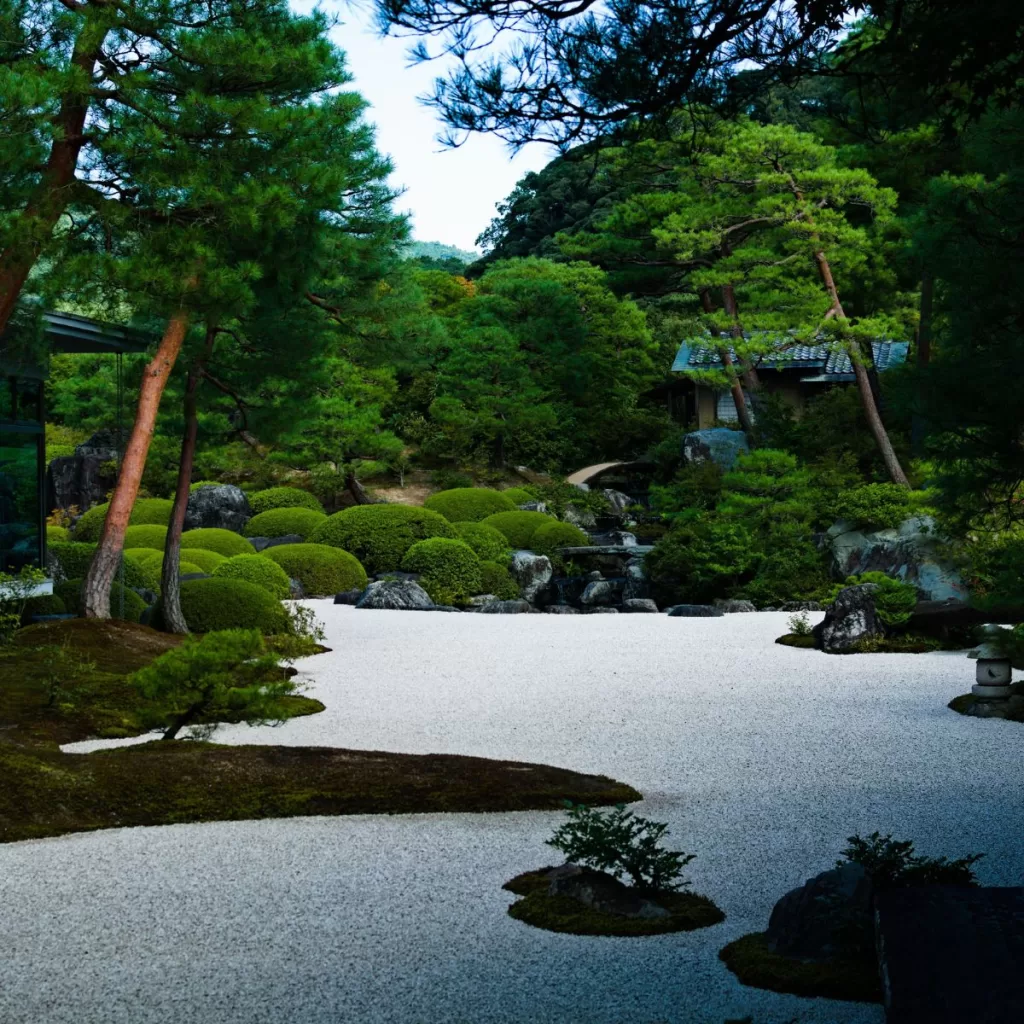
The museum is home to a vast collection of Japanese paintings, showcasing the beauty of nature and traditional Japanese art.
This museum’s stunning Japanese gardens are considered some of the most beautiful in Japan. The museum integrates delicate gardens seamlessly with artwork and architecture to create a serene experience. Seasonal flowers, ponds, bridges, and meticulously clipped shrubs are perfectly framed as living works of art from the museum’s windows and gardens. It exemplifies Japanese horticultural mastery.
With its serene atmosphere and captivating displays, the Adachi Museum of Art offers a delightful experience that allows visitors to immerse themselves in the world of Japanese art and find inspiration in its beauty.
Historic Villages of Shirakawa-go and Gokayama
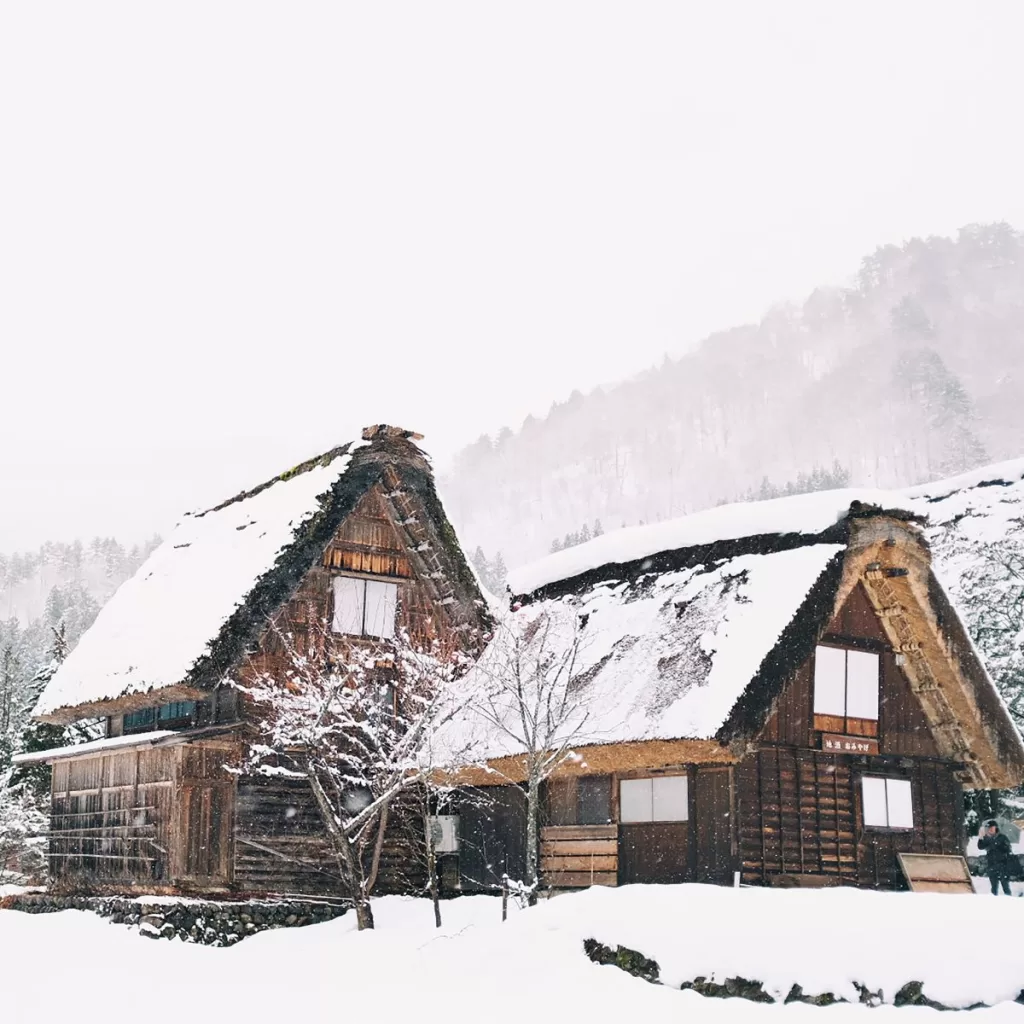
Located in the mountainous regions of Japan, these villages are known for their unique traditional houses called gassho-zukuri. These houses have steep thatched roofs that resemble hands clasped in prayer, which endure heavy snowfall in the winter.
These remote mountain villages with steep thatched roof houses allow visitors to step back in time to a traditional way of life. Declared UNESCO sites, the villages showcase gassho-zukuri architecture developed over centuries to withstand the region’s heavy snowfalls. Ogimachi in Shirakawa-go has restored gassho-zukuri farmhouses and artifacts providing cultural insight.
Visitors can stroll through the villages, marvel at the rustic beauty, and learn about the history and way of life in these remote areas. With their picturesque landscapes and charming old-world charm, the Historic Villages of Shirakawa-go and Gokayama are captivating destinations for travelers seeking a glimpse of Japan’s cultural heritage.
Kakunodate Samurai District, Akita

The former samurai district in Kakunodate has some of Japan’s best-preserved samurai architecture. The streets lined with wooden samurai houses, castle ruins, cherry trees, and a samurai garden create a window into feudal times. Several elegant former samurai manors are open for tours, some with valuable armor, weapons, and furnishings conveying their prior luxury.
Visitors can explore the historic streets lined with traditional houses and get a sense of the samurai way of life. The district also features museums where you can learn more about the samurai culture and history of the region.
With its charming atmosphere and remarkable architecture, Kakunodate Samurai District is a must-see destination for history enthusiasts and anyone interested in experiencing the rich heritage of Japan’s samurai past.
Mount Fuji, Shizuoka
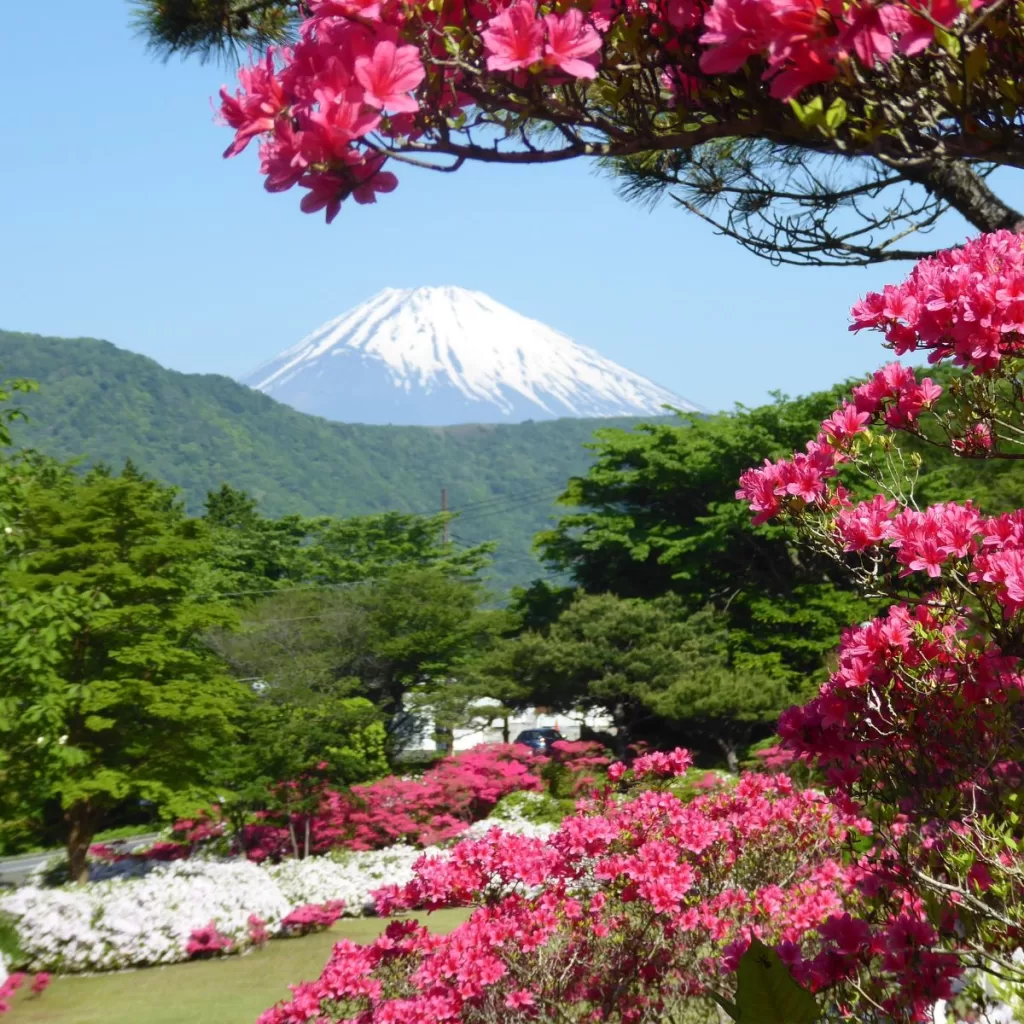
Mount Fuji in Shizuoka is an awe-inspiring natural wonder. As Japan’s highest mountain, it stands tall and majestic, capturing the imagination of visitors from far and wide. Its iconic symmetrical cone shape and snow-capped peak make it a sight to behold.
Climbing Mount Fuji is a popular activity for those seeking adventure and breathtaking views. However, even from a distance, the mountain’s beauty is undeniable.
Many visitors choose to admire it from vantage points or enjoy the serene landscapes surrounding the mountain. Mount Fuji is a symbol of Japan’s natural beauty and a must-visit destination for anyone wanting to experience the grandeur of nature.
Yakushima, Kagoshima
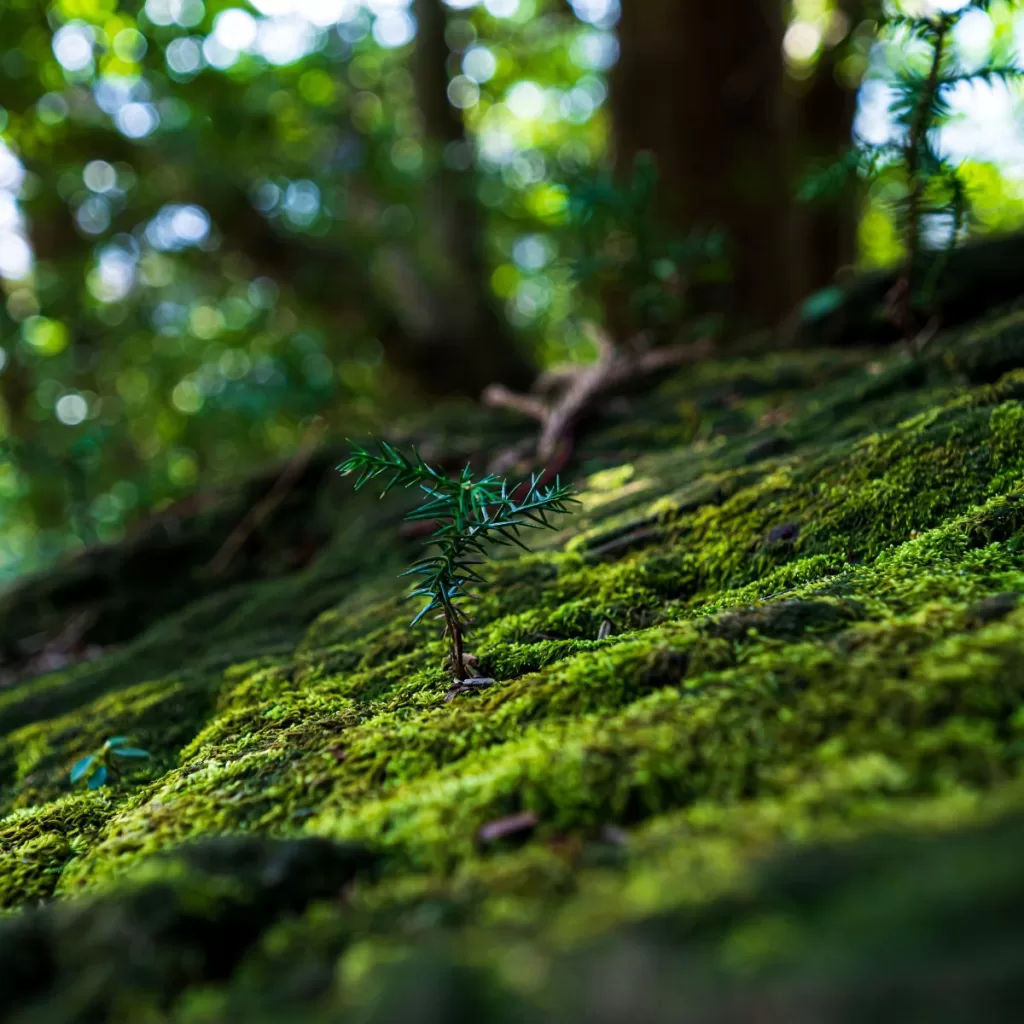
Yakushima in Kagoshima is a captivating island that offers a unique and immersive natural experience. Known for its ancient cedar forests, this UNESCO World Heritage site is a haven for nature lovers. The lush greenery and towering trees, some of which are thousands of years old, create a serene and magical atmosphere.
Visitors can embark on scenic hikes, explore hiking trails, and encounter various wildlife species that call Yakushima home. Whether it’s a walk through the enchanting moss-covered forest or a dip in the crystal-clear waters surrounding the island, Yakushima promises an unforgettable adventure in the lap of nature.
Apart from its verdant landscapes, Yakushima is famous for its stunning coastline and picturesque beaches. The island boasts pristine white sandy beaches where visitors can relax, soak up the sun, and enjoy the tranquil beauty of the surrounding ocean.
Ogasawara Islands, Tokyo

The Ogasawara Islands in Tokyo is a remote and pristine archipelago known for its stunning natural beauty. Located about 1,000 km south of the Japanese mainland, these islands offer a unique and untouched paradise.
With their crystal-clear turquoise waters, vibrant coral reefs, and lush green landscapes, the Ogasawara Islands are a haven for marine life and nature enthusiasts. Snorkeling, diving, and kayaking are popular activities for visitors to explore the diverse underwater world and the abundant marine biodiversity that thrives in these protected waters.
The Ogasawara Islands are not only a marine paradise but also home to various endemic and rare species. The islands are recognized as a UNESCO World Natural Heritage site, as they harbor unique flora and fauna found nowhere else in the world.